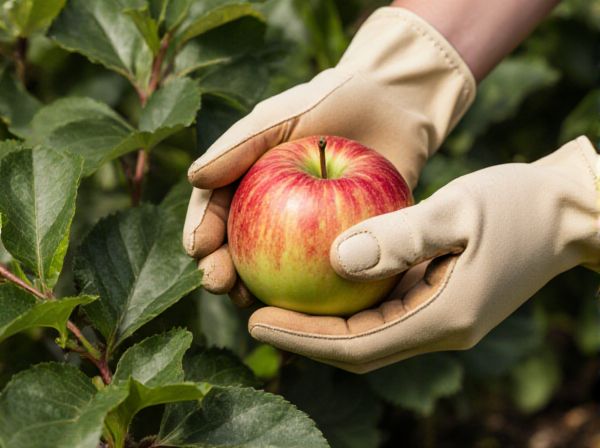
Heritage Apples vs Modern Varieties Illustration
Heritage apples offer unique flavors and textures that reflect traditional cultivation methods, often providing greater biodiversity and resilience compared to modern varieties. Modern apples are bred for uniformity, shelf life, and mass production, which can sometimes compromise taste and nutritional value. Choosing heritage apples supports agricultural diversity and preserves genetic traits that could be vital for future crop sustainability.
Table of Comparison
| Feature | Heritage Apples | Modern Varieties |
|---|---|---|
| Flavor | Rich, complex, often tart | Milder, sweeter, consistent |
| Texture | Firm, sometimes coarse | Crisp, uniform |
| Appearance | Varied shapes and colors | Standardized, bright |
| Storage Life | Moderate, varies by variety | Extended, bred for longevity |
| Seed Origin | Heirloom genetic lines | Hybrid, selectively bred |
| Common Uses | Eating fresh, cider, preserving | Eating fresh, commercial sale |
| Availability | Limited, specialty markets | Widespread, supermarkets |
Introduction to Heritage and Modern Apple Varieties
Heritage apple varieties, known for their unique flavors and historical significance, often boast greater genetic diversity compared to modern varieties, which are selectively bred for uniformity, shelf life, and disease resistance. These heirloom apples, such as the Cox's Orange Pippin and Northern Spy, offer rich taste profiles ideal for eating fresh or culinary uses. Modern apple varieties like Gala, Fuji, and Honeycrisp dominate commercial markets due to their consistent texture and sweetness, appealing to broad consumer preferences and large-scale production demands.
History and Origins of Heritage Apples
Heritage apples, also known as heirloom varieties, originated centuries ago and were traditionally cultivated in orchards across Europe and North America before the rise of commercial apple breeding. These apples possess distinctive flavors, textures, and colors that reflect their diverse genetic heritage, often linked to specific regions or local farming practices. Unlike modern varieties bred primarily for uniform appearance and transportability, heritage apples maintain genetic diversity and historical significance, preserving ancient cultivation methods and unique taste profiles.
Development of Modern Apple Varieties
Modern apple varieties have been developed through selective breeding and genetic techniques to enhance traits such as disease resistance, shelf life, and sweetness. These cultivated breeds often prioritize uniformity and productivity, contrasting with heritage apples that emphasize unique flavors and traditional genetics. Advances in horticultural science have accelerated the creation of apples suited for mass production and global distribution while maintaining consumer appeal.
Flavor Profiles: Heritage vs Modern Apples
Heritage apples boast complex, multifaceted flavor profiles with a balance of sweet, tart, and aromatic notes, often delivering unique and nuanced tastes that reflect their traditional cultivation. Modern apple varieties tend to prioritize sweetness and consistency, offering milder, less varied flavors designed for mass appeal and extended shelf life. The preservation of diverse flavor characteristics in heritage apples makes them highly valued for artisanal uses, contrasting with the streamlined taste profiles of commercial modern varieties.
Disease Resistance and Hardiness Comparison
Heritage apples often exhibit greater disease resistance and hardiness compared to modern varieties due to their genetic diversity and adaptation to local climates over centuries. Modern apple cultivars prioritize appearance and yield but typically require intensive chemical treatments to manage vulnerabilities to common diseases like apple scab and powdery mildew. The robust resilience of heritage apples reduces the need for pesticides, making them preferable for organic and sustainable orchards seeking durability against environmental stresses.
Growing Requirements: Traditional vs Contemporary
Heritage apples typically require more specific soil conditions and longer maturation periods, thriving best in cooler climates with well-drained, nutrient-rich soil. Modern apple varieties have been bred for adaptability, allowing growth in a wider range of environmental conditions with reduced pest resistance and shorter growing seasons. Modern cultivation techniques favor high-density planting and mechanized harvesting, whereas heritage apples often need traditional orchard management and manual care for optimal fruit quality.
Nutritional Differences Between Apple Types
Heritage apples generally contain higher levels of antioxidants, vitamins, and minerals compared to modern varieties, which are often bred for sweetness and shelf life rather than nutritional content. The polyphenol content in heritage apples contributes to their superior antioxidant properties, promoting better health benefits such as reduced inflammation and improved heart health. In contrast, modern apples tend to have lower fiber and vitamin C levels, making heritage varieties a more nutrient-dense choice for consumers seeking enhanced dietary value.
Preservation of Heritage Apple Varieties
Preservation of heritage apple varieties is crucial for maintaining genetic diversity and enhancing resilience against pests and diseases. These traditional apples, often prized for unique flavors and historical significance, offer valuable traits that modern varieties may lack due to selective breeding for uniformity and storage longevity. Efforts in conservation orchards, seed banks, and local cultivation support the survival and renewed appreciation of these heirloom cultivars.
Culinary Uses of Heritage and Modern Apples
Heritage apples possess diverse flavor profiles and textures ideal for baking, sauces, and cider production, offering complex sweetness and tartness that enhance traditional recipes. Modern apple varieties, bred for consistent sweetness and crispness, excel in fresh eating and salads but often lack the nuanced flavors needed for intricate culinary applications. Culinary chefs prefer heritage apples for recipes requiring robust aroma and varied acidity, while modern apples suit quick preparations and commercial-scale usage due to uniformity.
Choosing the Best Apple Variety for Your Garden
Heritage apples often provide unique flavors and adaptability to local climates, making them ideal for gardeners seeking distinctive varieties with historical significance. Modern apple varieties typically offer disease resistance and higher yields, suitable for those prioritizing productivity and ease of maintenance. Selecting the best apple variety depends on balancing your garden's climate, soil conditions, and personal taste preferences for flavor and texture.
Heritage Apples vs Modern Varieties Infographic

 gardendif.com
gardendif.com